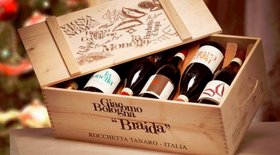Asti Spumante (Winemaking, Price, How To Buy, History)
Curious to learn all about Asti Spumante and buy one for your wine collection?
This Italian sparkling wine, with rich floral aromas, is a celebration of Piedmont's rich winemaking legacy.
Bring it home to drink with friends and family, or store it in your cellar for a grand wedding bash. It’s sure to become an instant crowd favorite on all special occasions - because no one is immune to its charms!
In this article, we’ll tell you all you need to know about the Asti Spumante wine, winemaking practices, the best ones to buy, prices, and much more. We’ll also show you the easiest way to buy it!
Further reading
- Explore rich Merlot Wines and Refreshing Pinot Grigio!
- Discover The Best Wine Brands and the most sought after French Wines.
What is Asti Spumante?
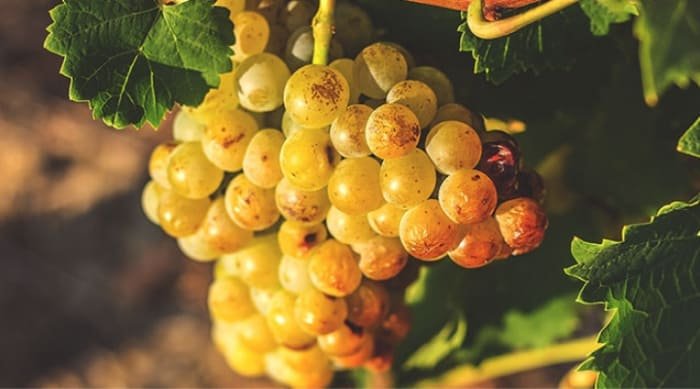
Spumante (meaning ‘sparkling wine’ in Italian) is a white wine made with Moscato Bianco grapes from Italy’s Piedmont wine region. Its production is mainly focused around Alba and the province of Asti in northern Italy.
Although the Moscato Bianco variety has been around in Italy for nearly a thousand years, the tradition of making sparkling wine with it is relatively recent. Sparkling Asti was first made in 1870 by winemaker Carlo Gancia, who studied Champagne production methods in the Champagne wine region in France.
Later, Asti Spumante crossed the Atlantic to the United States with returning WWII soldiers who’d developed a taste for the sweet wine accompanying desserts.
In 1993, it gained a DOCG status (more about this soon.) Since then the word “Spumante” was removed from the labels, although you might still see “Asti Spumante” on some bottles of this Italian sparkling wine.
But what makes up the delicious fruity flavor of this aromatic wine?
Let’s look at the Moscato Bianco grape varietal and the terroir in which it is grown before we move onto more details about the wine.
Related articles
Meanwhile, if you want to know how to invest in other fine wines like a 1990 Dom Perignon, check out this article.
Or, if you want to expand your collection with French Champagne and other wine brands from all over the world, here are some of the best ones you should consider!
The Moscato Bianco varietal
The Muscat Blanc à Petits Grains, locally known as Moscato Bianco, is the most widely cultivated varietal of Italy. It is the source of Asti Spumante’s unique, sweet flavors.
Moscato grape types

Muscat or Moscato is a family of grapes that includes over 200 varieties. But these four members of the Muscat grape family are most widely used in winemaking:
- Muscat Blanc a Petits Grains or the Italian Moscato Bianco: A white wine grape produced in almost every major wine region of the world
- Muscat of Alexandria: A white wine grape that’s also a popular table grape
- Muscat Ottonel: A pale grape that’s better suited to the cooler climate of central and eastern Europe
- Muscat of Hamburg: A grape that’s mostly used to make dessert wines in the US and table wines in China
A Brief History of Moscato Bianco
The Moscato Bianco has its origins in Greece. The Grecians brought it to France and subsequently to Italy via sea routes.
The international trading boom in 17th century Europe meant that Moscato Bianco reached far and wide, including to countries like Australia and South Africa.
In each country, this white Muscat grape took on a new name and slightly different forms and flavors. This is why you’ll come across a varied selection of Moscato Bianco wines and fortified vermouths from all over the world.
Here are some examples:
Moscato Bianco producing regions and the variety of wines made from it
In Greece, its country of origin, the Moscato Bianco variety is used to make Vin Doux Naturelle (a dry, fortified wine) on Somos island.
French winemakers primarily blend this variety with other local grapes such as Grenache Blanc and Muscat of Alexandria to create fortified wines, and with Clairette Blanc grapes to make Clairette de Die.
One can find other Moscato Bianco-based wines in Germany, Australia, and the USA too.
However, the aromatic Moscato Bianco grape truly comes into its own in the Piedmont wine region in the foothills of the Italian Alps!
And, Italy’s trademark sparkling wine, Asti Spumante, is made with 100% locally grown, handpicked Moscato Bianco grapes in this region.
What’s special about this wine region?
Terroir of Piedmont
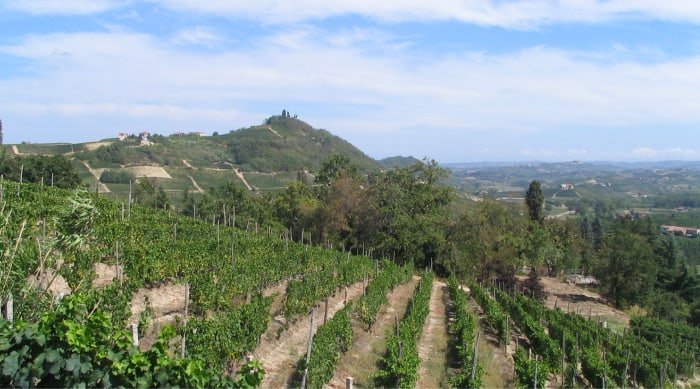
Italy's hilly northwest is surrounded on three sides by the Alps and is the most important wine-producing region of the country.
A majority of its vineyards are located in the cool, hilly areas of Langhe and Montferrat in the neighboring provinces of Asti, Cuneo, and Alessandria. The most densely cultivated communes are Santo Stefano Belbo, Canelli, Calosso.
These wine-growing hills of Piedmont have been designated as a UNESCO World Heritage Site for their natural and human-crafted step agricultural landscape.
The limestone and sandstone deposits of the ancient folds of Piedmont make it a fertile ground for native grape varieties like Moscato Bianco and Nebbiolo.
Aromas and flavors
The complex and delicious flavors in the Bianco wines mimic Piedmont’s unique geography and climate.
And, you’ll find rich aromas of fruits like peach and apricots with hints of candy and jasmine flowers in your glass of Asti Spumante!
So how is a bottle of Asti Spumante made from these luscious grapes?
Asti Spumante winemaking process
Asti wines are classified as DOCG (controlled and guaranteed designation of origin), the highest rating for an Italian wine appellation. This means that the wine will be fermented to have alcohol levels between 7 and 9%.
It also implies that all Asti DOCG wines are made only from locally grown Moscato Bianco grape variety.
This wine is made using the Charmat method also known as the metodo Italiano or the tank method.
Charmat method
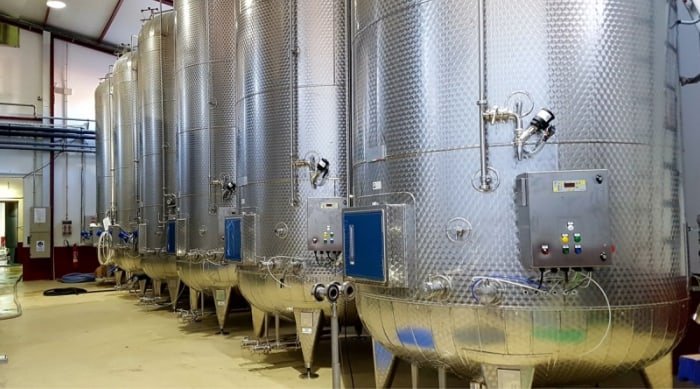
These grapes are harvested when their sugar and ripeness levels are optimal and then crushed. The juice is transferred to a sealed, pressurized tank and mixed with yeast to kickstart the fermentation process.
Carbon dioxide, the by-product of the fermentation, is pressurized and creates bubbles in the sparkler. Once it reaches the required alcohol level, the fermentation is abruptly interrupted by chilling the wine and filtering out the excess yeast.
This Charmat method controls the alcohol levels but also reduces Asti Spumante’s bubbliness. Unlike other champagne & sparkling wines, there is no second fermentation.
And finally, this sweet, aromatic wine with 3 to 5% residual sugar is bottled.
How is Asti Spumante different from other sparkling wines in Italy?
You probably won’t make the rookie error of calling an Italian sparkling wine an Asti champagne!
But pointing out the subtle differences between the various Italian bubblies?
This may need some reading up.
Let’s understand how Asti Spumante stands out in a room full of other sparkling wines from the region.
Spumante vs. Moscato d’Asti
Moscato d’Asti is Spumante’s closest cousin in every possible way. They’re both made in the Asti region and share the aromas of fruity desserts. They’re DOCG classified and made using the Charmat method.
However, while both kinds of wine are required to maintain lower alcohol levels than most other sparkling wines, Moscato d’Asti has very low alcohol content (5.5% ABV).
Moreover, Asti Spumante’s atmospheric pressure (of 4 bars) gives it a more vibrant fizz than the 2.5 bars in the making of Moscato d’Asti. It tends to have a gentle, almost invisible fizz.
Spumante vs. Prosecco
The Glera grape-based Prosecco (from the region with the same name) is the result of hundreds of years of winemaking history.
It’s also made using the Charmat method but then undergoes a secondary fermentation in the bottle like in the Champagne region or the Spanish bubbly, Cava. This enhances its bubbliness and alcohol levels.
Spumante vs. Franciacorta
This wine from Lombardy debuted (comparatively late) in 1961, but is known for using the ‘metodo classico’ (or classic method) for making sparkling white wine. This gives the wine an added bounce, nuttiness, and creaminess.
In this, it resembles the ‘frizzante’ (slightly fizzy red wine) from the same region, Lambrusco.
It is made with a blend of Chardonnay, Pinot Noir, and Pinot Bianco grapes.
How does Asti Spumante taste?

Asti Spumante is pale golden-yellow in color and has a mild fizz with honeyed notes. Its distinct aroma of ripe peach and acacia flowers will transport you straight to a sunny vineyard in Piedmont!
You’ll find hints of tangerine peel and creamery butter in the complex and rich layers of this Moscato wine.
This perennial favorite sparkles with crisp acidity, low alcohol content, and sweet, fruity flavors, making it a tempting addition to the dessert table.
Food pairings with Asti Spumante
A chilled glass of Asti Spumante can be served as an aperitif or as a palate cleanser between courses. This sparkler is also an unusual addition to some cocktails like a mimosa.
Try soaking honeydew and cantaloupe melon balls in Spumante for a simple fruit salad.
With its sweetness and low alcohol content, you’ll be able to enjoy an Asti alongside a hot and spicy Asian food platter.
Traditionally, this aromatic wine has been a dessert favorite. You can pair it with a complex and rich dish like key lime pie or a delightfully layered pastry. It goes just as well with homely berry tarts and ice cream!
Many fans of the wine advise against drinking Spumante with chocolate as it eats into the fresh fruit sweetness of the wine. But if you’re feeling particularly decadent, some chocolate covered strawberries with some chilled Asti are exactly what you need for a romantic spread!
Aging potential of Asti Spumante
Once bottled, Asti Spumante is aged for two months. But it does not ferment further in the bottle. It’s best drunk as young as possible. This makes it an excellent last-minute selection for a party or gifting.
However, a well-stored bottle of Asti can last for up to four years.
Now, you’ll find Asti Spumante bottles made by a number of wine and liquor producers. But, which are the best ones you should get hold of?
The best Asti Spumante wines (with pricing)
Here’s the best of this delicious summer sparkler that you should consider adding to your wine collection.
1. Cinzano Asti

Cinzano’s legacy of making exquisite Italian wines and vermouths dates back to nearly three centuries. In 1776, they became wine suppliers to the royal court of the Savoy dynasty. And on their insistence, Cinzano sparkling wines started commercial production in the mid 19th century.
Drink it for its distinctive, intense taste with a floral and acacia kick, and a peach and sage finish.
Cinzano Asti Price:
$7.89 to $12.99 (for 750ml)
2. Martini & Rossi Asti

Martini & Rossi has been making world-class Martini & Rossi Asti Spumante since 1863. They’re strategically located in the Piedmont region, close to the finest Moscato Bianco vineyards of Asti and Alba. They’ve been producing fine blends of Martini & Rossi Asti and Prosecco wines.
Pick up a bottle of Martini & Rossi Asti to enjoy the classic creamy, floral flavors and acidity of this fine Italian wine.
Martini & Rossi Asti Price:
$8.97 (for 750ml)
3. Asti Spumante DOCG 2018 Cascina Fonda
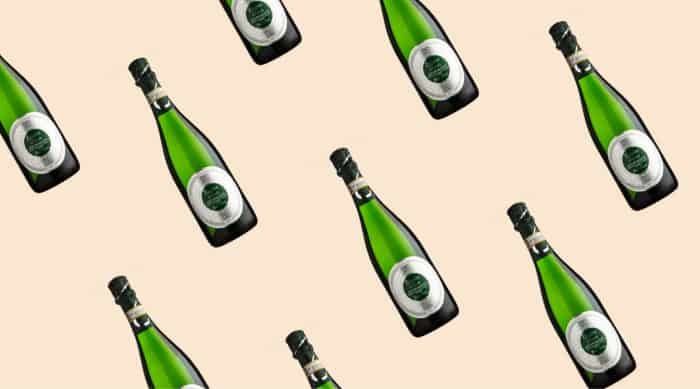
Established in the year 1963, Cascina Fonda sources high-quality grapes from the vineyards in the communes of Mango and Neive. Their long list of labels includes both brut (extra dry) wines as well as sweet wines.
Cascina Fonda estates began making Asti variety in 1993 and have been bottling two batches of this flavorful wine since.
Asti Spumante DOCG 2018 Cascina Fonda Price:
$18 to $34 (for 750ml)
4. Ceretto Asti Spumante DOCG

The winemaker Ceretto began making wines from their home estate in Alba in the 1930s. Today, the family’s third generation proudly runs four wineries and creates 17 wines.
Their journey of making Asti Spumante began in 1977 with Moscato grapes from Santo Stefano Belbo e Calosso comune.
Ceretto Asti Spumante DOCG Price:
$14 to $18 (for 750ml)
5. Contratto De Miranda Asti Spumante
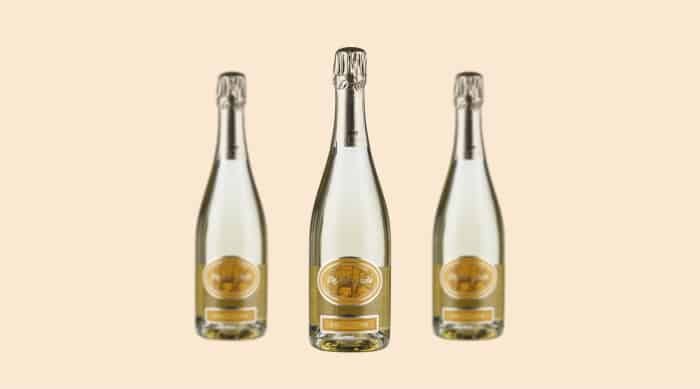
This Canelli-based wine manufacturer is the oldest ‘metodo classico’ house. It was founded in 1867 and boasts of 45 hectares of vineyards and massive production of 200,000 bottles of wine and liquor each year.
Contratto produces 2000 bottles of Spumante each year. It’s aged up to two months in the bottle and can be kept for four more years in the right cellar-like conditions.
Contratto De Miranda Asti Spumante Price:
$141 (for 750ml)
6. Gancia Asti Spumante

Gancia wines was founded in 1850 by Carlo Gancia, the “father of Italian sparkling wine”.
With hints of exotic fruit, sage, and honey, this sweet, fruity wine from Gancia is nothing short of a sip of history!
Gancia Asti Spumante NV Price:
$10 to $13 (for 750ml)
7. Fontanafredda Asti Spumante Dolce 2019

The history of house Fontanafredda begins with the love story of King Vittorio Emanuele II and Rosa Vercellana (la bela Rosin). He bought the estate as a gift for her in 1858, which was inherited by their children.
Their Asti DOCG wines, true to the proud Piedmont tradition, are made using the Charmat method and bottled once a year.
Fontanafredda Asti Spumante Dolce 2019 Price:
$10 to $25 (for 750ml)
8. Riccadonna Asti Spumante
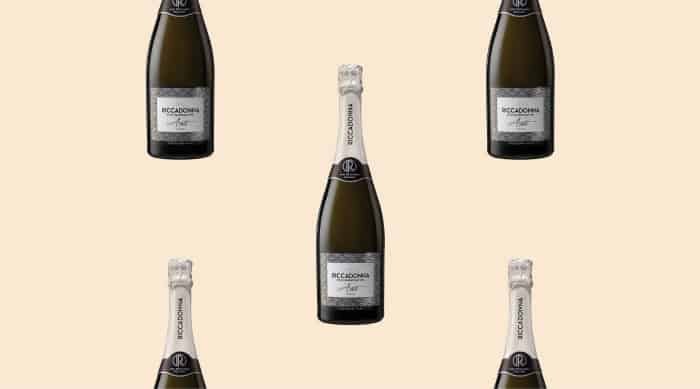
Founded in 1921, Riccadonna is one of the biggest manufacturers of the sweet Asti wine. In its century-long history, Riccadonna has firmly established its name in the international markets by amplifying the unique flavors of Piedmont. And its Asti Spumante is a continuation of the same legacy.
Don’t let its low prices fool you. Because Riccadonna’s Asti can give a bunch of rare wines and some of the world's favorite spirited beverages a run for their money!
Riccadonaa Asti Spumante Price:
$7 to $12 (for 750ml)
Now, what’s the best way to buy these wines?
You may find most of these Asti wines in boutique wine and spirit stores and online portals.
However, given the ever-growing demand Italian sparklers, there’s no shortage of counterfeit bottles in the market. Whether you’re buying a bottle for a celebration or adding Asti Spumante bottles to your wine investment portfolios, you simply cannot risk buying off-brand, duplicate wine.
Plus, you need to make sure you go through every single product detail and that you’re paying the right price for each bottle.
Don’t worry. You can easily buy an Asti Spumante and other wines with the help of a trusted wine investment company like Vinovest.
It’s the easiest way to not only buy, but also store, and sell your authentic, fine wines.
Here’s how.
Buy Asti Spumante and other wines through Vinovest
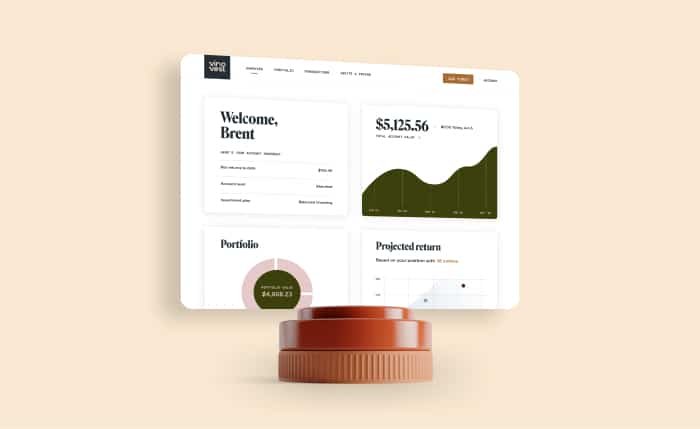
Vinovest is an online platform that helps you build a diverse and verified portfolio of investment-grade wines. Once you buy through Vinovest, your bottles will be stored professionally, and you can sell them whenever you want.
How does this work?
- Sign up
- Inform Vinovest about your investment preferences and risk appetite.
- Funds your account with a minimum of $1,000.
- Track your wine portfolio online.
As simple as that!
Benefits of wine investment through Vinovest
If you’re wondering why you should start investing via Vinovest, here are nine reasons!
1. Easy Buying and Selling
Vinovest’s AI-based online platform makes it easy for you to buy and sell wines with just a few clicks. It sources wine prices from a wide range of publicly and privately available data sources. All so you can make informed decisions about your portfolio, effortlessly.
2. Best Prices
Forget about dealing with intermediaries! Once you’ve signed up on Vinovest, you’ll be able to buy wines at the best possible wholesale prices. That’s because Vinovest sources wines directly from winemakers and merchants.
3. Optimal Storage
Only the right storage conditions will preserve and enhance the value of your fine wine in the long run. And Vinovest will ensure that your bottles get professional attention in bonded warehouses, right from the day you buy them.
4. Check Provenance and Authenticity
You can be sure of your investment’s vintage, source, ownership history, and authenticity since Vinovest conducts detailed checks before buying each bottle.
5. Balanced, Curated Portfolio of Wines
With Vinovest, you get the advantage of superior quantitative investment models as well as the experience of a world-class team of sommeliers. Together, they build a robust portfolio that assures an attractive return on investment.
6. Access to a Deep Network
Vinovest’s industry-wide network ensures that you receive invites to upcoming vineyard visits, special sales, and limited releases.
7. Low Overall Costs
A 2.5% annual fee (or 1.9% for a portfolio above $50,000) will cover wine purchases, authentication, storage, a full insurance policy at market value, portfolio management, and selling your bottles. Also, since Vinovest uses bonded warehouses that don’t charge VAT and excise duty, you’ll enjoy significant tax advantages!
8. Easy delivery
Once you’ve sold a bottle, Vinovest ensures that it’s safely transported from the warehouse to your buyer. And when you want to enjoy your collection by opening a bottle, you can get it delivered to your home.
9. Ownership
The single biggest reason to rejoice? You own every single bottle in your wine portfolio.
Conclusion
Your wishlist of bubbly wines would be incomplete without some fine Asti wine!
But, to buy authentic bottles at the best prices, you’ll need to compare prices among a bunch of wine websites and auction sites. You’ll also have to consult with a wine expert or a broker, which means you’ll have to pay hefty fees.
It doesn’t have to be so complicated though!
Buying your favorite Asti, Zinfandel, and Merlot wines through Vinovest will ensure you get only the best bottles. You can also have them stored perfectly, and even sell them later at a profit.
So, simply sign up for Vinovest, and start your wine investment journey now!


